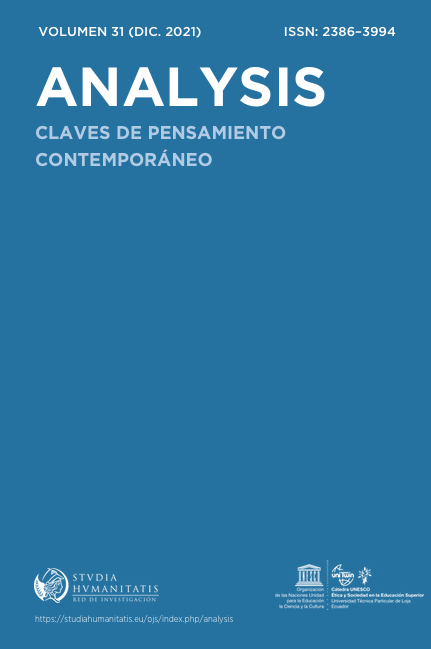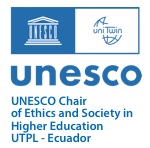Knowledge and attitudes on dentists in Pichincha, Ecuador
Abstract
Establish a level of knowledge, attitudes and strengths for dentists living in Pichincha, Ecuador, based on the concepts of a minimally invasive odontology, keeping in sight it’s development and capacitation. This is a research of an observational, analytic and transversal level, applied over a probabilistic sample of 250 dentists who offer services at the Pichincha province, which were tested with a questionary translated to Spanish language and approved by two professionals, applying a pilot test on a short level population. The questions took in consideration sociodemographic aspects as genre, age and years of job experience. The focus and knowledge about the minimally invasive dental concepts, explored diagnostical techniques, for prevention and restoration through 26 questions classified on the answer categories Likert. The obtained data was analyzed on a statistical way using the program SPSS, applying the Chi square test. For the results, a large majority of professionals belong to female genre, on an age below than 30. The 90% of the sample manifested enough knowledge, strengths and attitudes about the dental minimally invasive concepts. The Chi square technique determined that the level of education and formal capacitation doesn’t affect in the knowledge, attitudes and strengths of the professionals. As a result, the sample presented a high level of knowledge, strengths and attitudes involving the concepts of dental minimally invasive concepts on a high level obtained by informal ways.
Downloads
References
2. Newton, J., Asimakopoulou, K. Minimally invasive dentistry: Enhancing oral health related behaviour through behaviour change techniques. Br Dent J. 2017; 223, 147–150. https://doi.org/10.1038/sj.bdj.2017.659.
3. Chaple Gil Alain Manuel, Alea González Mariana. Infiltración de resina como tratamiento mínimamente invasivo de lesiones de caries dental incipiente. Rev Cubana Estomatol. 2017 ; 54( 1 ): 100-105. Disponible en: http://scielo.sld.cu/scielo.php?script=sci_arttext&pid=S0034-75072017000100009&lng=es.
4. Innes, N. P., Chu, C. H., Fontana, M., Lo, E. C., Thomson, W. M., Uribe, S., ... & Schwendicke, F. A century of change towards prevention and minimal intervention in cariology. Journal of dental research. 2019; 98(6), 611-617
5. Nahuelhuaique Fuentealba P., Díaz Meléndez J., Sandoval Vidal P.. Resinas infiltrantes: un tratamiento eficaz y mínimamente invasivo para el tratamiento de lesiones blancas no cavitadas. Revisión narrativa. Av Odontoestomatol. 2017; 33( 3 ): 181-186. Disponible en: http://scielo.isciii.es/scielo.php?script=sci_arttext&pid=S0213-12852017000300004&lng=es.
6. Chaple Gil, A. M., Baganet Cobas, Y., Montenegro Ojeda, Y., Álvarez Rodríguez, J., & Clavera Vázquez, T. D. J. Cierre de diastema con resinas compuestas híbridas. Revista Cubana de Estomatología. 2016; 53(1), 84-92.
7. Chaple Gil, A. M. Técnica modificada de restauración de cavidades Clase II utilizando resinas compuestas. Revista Habanera de Ciencias Médicas. 2015; 14(3), 348-456.
8. Astorga B, Barraza C, Casals JM, Cisterna MJ, Mena D, Morales F, Gonzalez S, Oliveira Junior O, Moncada G.. Avances en el Estudio de la Diversidad Bacteriana Oral Asociada a Caries Dental Mediante el Estudio Genómico. Int. J. Odontostomat. 2015 ; 9( 3 ): 349-356. Disponible en: https://scielo.conicyt.cl/scielo.php?script=sci_arttext&pid=S0718-381X2015000300002&lng=es. http://dx.doi.org/10.4067/S0718-381X2015000300002.
9. Frencken, J. E. Atraumatic restorative treatment and minimal intervention dentistry. British dental journal. 2017; 223(3), 183.
10. Rayapudi J, Usha C. Knowledge, attitude and skills of dental practitioners of Puducherry on minimally invasive dentistry concepts: A questionnaire survey. J Conserv Dent. 2018; 21(3): 257-262.
11. Innes, N. P., Chu, C. H., Fontana, M., Lo, E. C., Thomson, W. M., Uribe, S., ... & Schwendicke, F. A century of change towards prevention and minimal intervention in cariology. Journal of dental research. 2019; 98(6), 611-617.
12. Almahdy, A., AlShamrani, M., Alqahtani, M., & Al, M. The concepts of minimally invasive dentistry and its impact on clinical practice: a survey with a group of Dentists in Saudi Arabia. Age. 2017; 3, 0-52.
13. Goswami M, Sachdeva P, Paul S, Walia V, Chawla S. Knowledge, attitude and practice regarding caries risk assessment and management in Delhi- National Capital Region: A cross-sectional survey. J of Indian Association of Public Health Dentistry. 2016; 14(2):188-196
14. Le Clerc J, Gasqui MA, Laforest L, Beaurain M, Ceinos R, Chemia F, Chvalier V, Colon P, Fioretti F, Gevrey A, Kerouredan O, Maret D, Mocquot C, Ozcam C, Plissier B, Perez F, Terrer E, Turpin YL, Seux D, Domejean S. Knowledge and opinions of French dental students related to caries risk assessment and dental seleants (preventive and therapeutic). Odontology. 2021; 109, 41-52 https://doi.org/10.1007/s10266-020-00527-7
15. Innes, N. P., Chu, C. H., Fontana, M., Lo, E. C., Thomson, W. M., Uribe, S, Heiland M, Jepsen S, Schwendicke, F. A century of change towards prevention and minimal intervention in cariology. Journal of dental research, 2019; 98(6), 611-617.
Copyright (c) 2021 © Analysis

This work is licensed under a Creative Commons Attribution-NonCommercial-NoDerivatives 4.0 International License.








